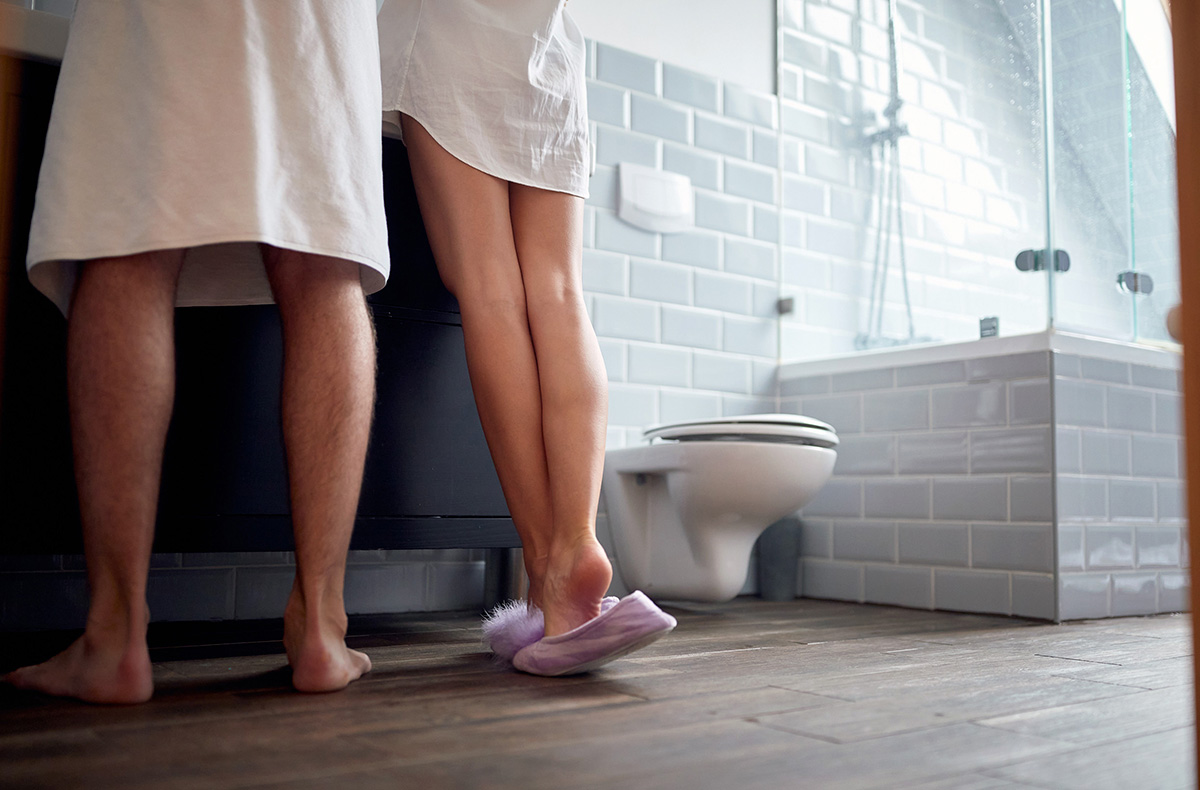As many people know, dietary and lifestyle interventions, natural therapies such as phytotherapy, mycotherapy, aromatherapy and others, stress management and psychological balance, elimination of toxic substances and endocrine disruptors, and supplementation with vitamins, minerals, essential fatty acids or other substances can have a great influence on the overall functioning of our body, and in particular, on the proper functioning of our neuro-immuno-endocrine system or axis. In the same way, these strategies can positively alter the state of our oral, cutaneous, intestinal and urogenital microbiota (or "flora"), a very important factor related to urinary tract infections. For all these reasons, I believe that a thorough review of other alternatives for the prevention and treatment of UTIs, beyond the classic recommendations, is essential to help many people to reduce the frequency with which they suffer from UTIs, their symptoms, their virulence and their possible complications, both direct and those resulting from the recurrent use of antibiotics.
Based on the primary causes of UTIs, in this website I review many of the possible interventions that can be helpful, such as dietary recommendations or the oral or local use of different types of products like vitamins, minerals, hormones or other natural compounds, not forgetting phytotherapy or aromatherapy. We will also talk about how to optimise the functioning of the immune system through lifestyle changes, stress reduction, improving sleep quality and others. We will briefly delve into the world of toxins and endocrine disruptors to understand how they can affect our health. We will also review dietary and non-dietary measures aimed at improving intestinal transit, especially constipation, and the state of our microbiota, both intestinal and vaginal. Other strategies we will mention are the improvement of bladder emptying in people suffering from chronic urinary retention (patients with prostatic hypertrophy - growth - of the prostate, stenosis - narrowing - of the urethra, neurological diseases, prolapse - descent - of the pelvic organs, etc.). We will also review the important role that correct pelvic statics plays in urogenital health. Treating dysmetry (imbalance) of the hips, alterations of the spine or other joints that can lead to a malfunction of the pelvic floor muscles is fundamental, as I will explain in detail in another article. Thus, we will see how voiding re-education by specialists is of utmost importance for patients to urinate correctly, as many people, for various reasons, perform what is called "uncoordinated urination" which can be the origin of urinary infections. So, if you are interested in what I am telling you, read on...
Bibliography:
Medical Student Curriculum: Adult UTI. https://www.auanet.org/ education/auauniversity/for-medical-students/medical-students-curriculum/medical-student-curriculum/adult-uti
Bonkat, G. et al. EAU guidelines on urological infections. 22-26 (European Association of Urology, 2017).
Nicolle LE, et al. Clinical practice guideline for the management of asymptomatic bacteriuria: 2019 update by the Infectious Diseases Society of America. Clin. Infect. Dis. 2019;68:1611–1615.
Colgan R, Nicolle LE, McGlone A, Hooton TM. Asymptomatic bacteriuria in adults. Am. Fam. Physician. 2006;74:985–990.
Darouiche RO, et al. Pilot trial of bacterial interference for preventing urinary tract infection. Urology. 2001;58:339–344.
Sunden F, Hakansson L, Ljunggren E, Wullt B. Escherichia coli 83972 bacteriuria protects against recurrent lower urinary tract infections in patients with incomplete bladder emptying. J. Urol. 2010;184:179–185.
Hull R, et al. Urinary tract infection prophylaxis using Escherichia coli 83972 in spinal cord injured patients. J. Urol. 2000;163:872–877.
Darouiche RO, Thornby JI, Cerra-Stewart C, Donovan WH, Hull RA. Bacterial interference for prevention of urinary tract infection: a prospective, randomized, placebo-controlled, double-blind pilot trial. Clin. Infect. Dis. 2005;41:1531–1534
Medina M, Castillo-Pino E. An introduction to the epidemiology and burden of urinary tract infections. Ther Adv Urol. 2019 May 2;11:1756287219832172.
Bonkat G et al. EAU guidelines on urological infections 2021. ISBN 978-94-92671-13-4
Buettcher M, Trueck J, Niederer-Loher A, Heininger U, Agyeman P, et al. Swiss consensus recommendations on urinary tract infections in children. Eur J Pediatr. 2021 Mar;180(3):663-674.
Flores-Mireles AL, Walker JN, Caparon M, Hultgren SJ. Urinary tract infections: epidemiology, mechanisms of infection and treatment options. Nat Rev Microbiol. 2015 May;13(5):269-84.
Schwaderer AL, Wolfe AJ. The association between bacteria and urinary stones. Ann Transl Med. 2017 Jan;5(2):32.
Struve C, Bojer M, Krogfelt KA. Characterization of Klebsiella pneumoniae type 1 fimbriae by detection of phase variation during colonization and infection and impact on virulence. Infect Immun. 2008 Sep;76(9):4055-65.
Ravel J, Gajer P, Abdo Z, Schneider GM, Koenig SS, et al. Vaginal microbiome of reproductive-age women. Proc Natl Acad Sci U S A. 2011 Mar 15;108 Suppl 1(Suppl 1):4680-7.
Blethyn AJ, Jenkins HR, Roberts R, Verrier Jones K. Radiological evidence of constipation in urinary tract infection. Arch Dis Child. 1995 Dec;73(6):534-5. doi: 10.1136/adc.73.6.534. PMID: 8546513; PMCID: PMC1511452.
Thurmon KL, Breyer BN, Erickson BA. Association of bowel habits with lower urinary tract symptoms in men: findings from the 2005-2006 and 2007-2008 National Health and Nutrition Examination Survey. J Urol. 2013 Apr;189(4):1409-14. doi: 10.1016/j.juro.2012.10.008. Epub 2012 Oct 11. PMID: 23063806; PMCID: PMC3693946.
https://www.niddk.nih.gov/health-information/digestive-diseases/constipation
Anger J, Lee U, Ackerman AL, Chou R, Chughtai B, et al. Recurrent Uncomplicated Urinary Tract Infections in Women: AUA/CUA/SUFU Guideline. J Urol. 2019 Aug;202(2):282-289.
Kontiokari T, Nuutinen M, Uhari M. Dietary factors affecting susceptibility to urinary tract infection. Pediatr Nephrol. 2004 Apr;19(4):378-83.
Foxman B, Frerichs RR. Epidemiology of urinary tract infection: II. Diet, clothing, and urination habits. Am J Public Health. 1985 Nov;75(11):1314-7.
Hoen LA, Bogaert G, Radmayr C, Dogan HS, Nijman RJM, Quaedackers J, Rawashdeh YF, Silay MS, Tekgul S, Bhatt NR, Stein R. Update of the EAU/ESPU guidelines on urinary tract infections in children. J Pediatr Urol. 2021 Apr;17(2):200-207.


